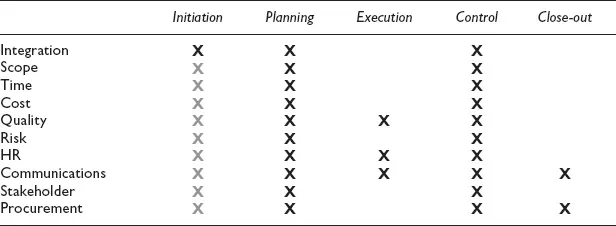
The Practitioner's Handbook of Project Performance
Agile, Waterfall and Beyond
Mark Phillips, Mark Phillips
- 448 pages
- English
- ePUB (adapté aux mobiles)
- Disponible sur iOS et Android
The Practitioner's Handbook of Project Performance
Agile, Waterfall and Beyond
Mark Phillips, Mark Phillips
À propos de ce livre
Practitioners operate in a necessary reality. We work in a space where project performance is above theory or methodology. In the best environments, delivery and an affirmative culture are what matter most. In the worst, it is politics and survival. In any environment we are challenged to adopt best practices and adapt our style to the environment in which the project is occurring. This is a book about those best practices and practitioner experiences. It is a must have reference and guide book for project managers, general managers, business leaders and project management researchers.
This book is the result of the hard work and dedication of more than 35 authors from more than 15 countries across four continents. It brings a diversity of experience, professional and personal. It includes practitioners, leading academics, renowned theorists and many who straddle those roles. The chapters cover experiences in software, large scale infrastructure projects, finance and health care, to name a few. The chapters themselves take many forms. Check out the table of contents to get a deeper sense of the topics included. All provide real-world guidance on delivering high performing projects and show you how to build, lead and manage high performing teams.
The Practitioners Handbook of Project Performance is complete in itself. It can also be an enticing start to an ongoing dialogue with the authors and a pleasurable path to get deeper into the subject of project performance. Find your favorite place to begin learning from these chapters, to begin taking notes and taking away nuggets to use in your everyday. But don't stop there. Contact information and further resources for this diverse team of experts authors are found throughout. The Practitioners Handbook is a modern guide to the leading edge of project performance management and a path to the future of project delivery.
Foire aux questions
Informations
Section II
Processes, tools and techniques
Chapter 6
Performance
Case study: The new Ashgabat airport
- Turkmenistan Airlines’ air tickets for flights are not sold over the Internet. They promised to initiate that program by 2015 but failed to do so.
- Turkmen entry visa is one of the most expensive ones in the world, and it is almost impossible to obtain.
- You can’t rent a car in Ashgabat.
- You can’t walk with a camera around the city and, God forbid, you decide to take pictures of the government buildings.
- Internet access is limited and all of the popular social media sites like Facebook, Twitter, WhatsApp, Viber and others are blocked.
- Democracy index – 162nd place out of 167.
- Press Freedom – 178th place out of 180.
What is a project?
- Creation of the first prototype of the Formula One car is a project since it does have a defined start, an end and produces a unique product.
- Mass production of, say, canned soup is not a project, since while it has a defined start it does not have a defined end. Also, thousands of cans can’t be considered a unique product since all of them are identical.
- What are the domains of project vs portfolio management?
- What is project performance?
- How do we measure project performance?
- What is a successful project?
- What is a troubled project?
- What is a failed project?
Project vs portfolio management
What is project management?

- Project integration management
- Project scope management
- Project time management
- Project quality management
- Project cost management
- Project risk management
- Project human resources management
- Project communications management
- Project stakeholder management and
- Project procurement management
What is project portfolio management?
- Each project, as well as the portfolio of projects, should maximize th...